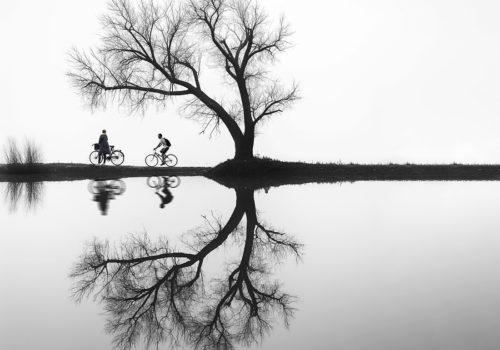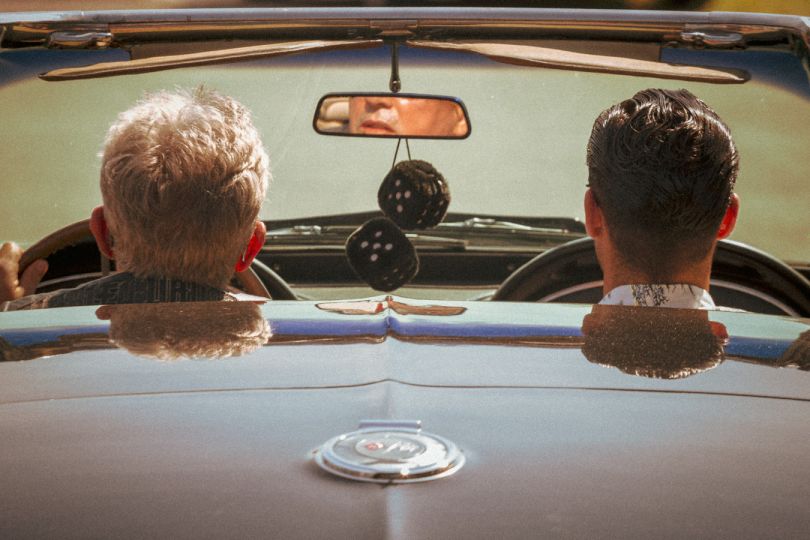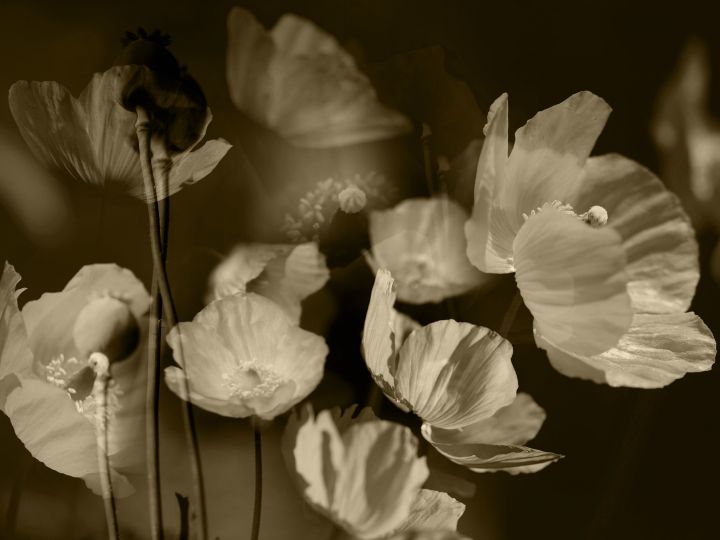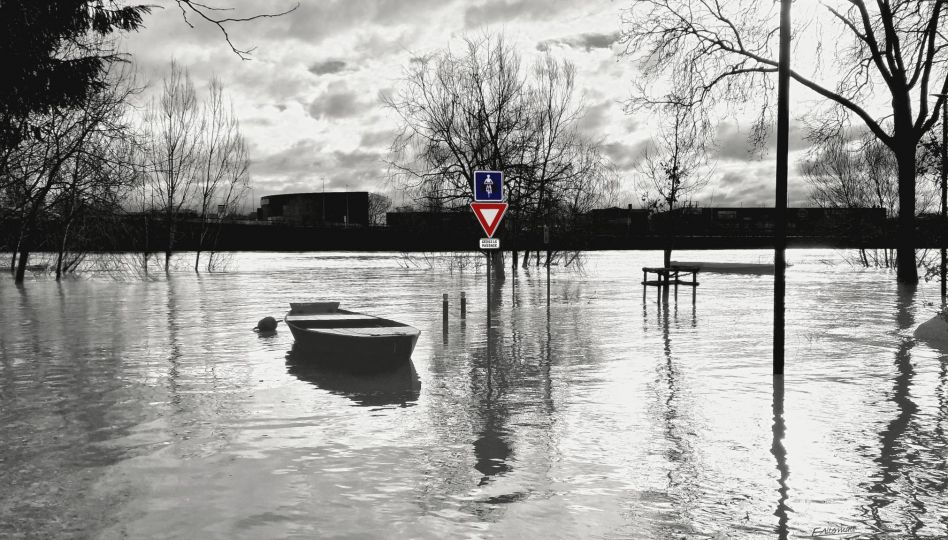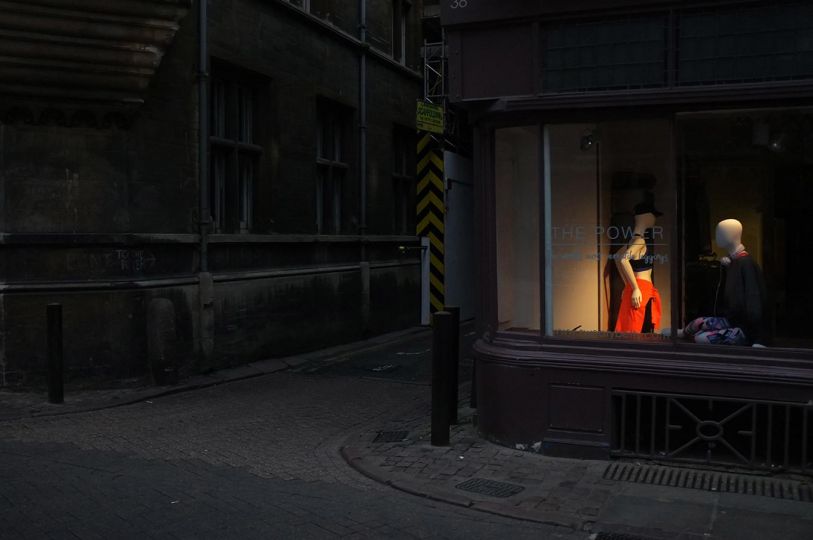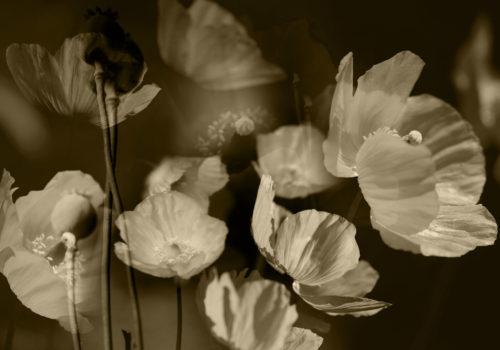Helena Georgiou : Transcending Time and Space.
Helena Georgiou is a Cypriot photographer. After studying interior design and photography, she attended courses at the University of Nicosia, Michigan State University, MoMA in New York, and Harvard Extension School. Her images, deeply influenced by the intersection of architecture and photography, aim to capture the very essence of architectural spaces and their impact on society. Recently, Helena has broadened her horizons by dedicating herself to archaeology and history at the Open University of Cyprus, thereby enriching her exploration of human history through photography.
Helena’s work is profoundly poetic, characterized by meticulous composition and a keen sense of observation, covering a wide range of subjects from portraiture to architecture and minimalist photography. Each image tells a story or evokes an emotion, giving her photographs an almost meditative quality.
By exploring themes such as minimalism, architecture, environmental conservation, and human experience, Helena highlights the profound ability of photography to create connections and tell captivating stories. Through her lens, she captures the essence of her subjects, inviting viewers to explore the depth and complexity of the world around us. Her photographs often capture plays of shadow and light that add an emotional dimension to her images. Her approach transcends mere technique to touch on the poetic, demonstrating her commitment to using her art as a vehicle for awareness and change, making her contributions a valuable part of contemporary photography. As she continues to document the world, Helena aspires to inspire and move, offering her viewers an invitation to discover the beauty, complexity, and narratives embedded in her photographs.
Her works, marked by a refined aesthetic and remarkable mastery of light, have earned her prestigious accolades, including the World Sony Photography Award and three European Parliament prizes. Her work is also regularly exhibited worldwide.
Website: www.helenageorgiou.com
Instagram: @frau.nikon
News : She recently published an ebook on photography. It explores techniques, and tutorials tips for photography :
https://www.helenageorgiou.com/e-book
Your first photographic trigger ?
Helena Georgiou : My first photographic trigger occurred during a university photography lesson while I was studying interior architecture. We were exploring how lighting and composition impact space, and I realized how photography could capture the essence of a well-designed interior. Seeing how a single photograph could highlight textures, lines, and the ambiance of a space fascinated me. That moment made me see photography not just as a tool for documenting designs, but as an art form in itself—one that could bring out the soul of the spaces I was passionate about creating.
The man or woman of image who inspired you?
H.G. : When capturing images, I find inspiration in the everyday resilience and authenticity of people. One woman who inspired me deeply was an elderly street vendor I photographed. Her weathered face told a story of a life full of challenges, yet her eyes shone with a quiet strength and hope. It reminded me of the beauty in perseverance and the importance of capturing those moments of genuine human emotion and experience. Such individuals inspire me to use my lens to tell stories that resonate beyond the surface.
The image you would have liked to take?
H.G. : The image I would have liked to take is one that captures the intersection of raw human emotion and the sublime beauty of nature. Imagine a solitary figure standing on the edge of a cliff at dawn, overlooking a vast, mist-covered valley. The light is just beginning to break through the clouds, casting a soft, golden glow that touches everything in its path. The figure, though small in the frame, is the focal point—conveying a sense of both isolation and connection to the world around them.
In this image, I would aim to capture the profound moment of introspection and awe that comes with witnessing something greater than oneself. The contrast between the rugged, untouched landscape and the delicate vulnerability of the human presence would speak to the themes of resilience, solitude, and the enduring beauty of our world.
The one that moved you the most?
H.G. : The photograph that moved me the most was of a refugee woman holding her newborn baby, while guiding her young daughter by the hand. The image is both heartbreaking and profoundly inspiring. The woman’s strength and determination are palpable as she navigates her difficult circumstances, yet there’s also a tender vulnerability in her embrace of her newborn and the protective way she leads her daughter. It’s a powerful reminder of the resilience of the human spirit and the profound bond of family amidst adversity. This moment captured the essence of struggle, hope, and love in a way that deeply resonated with me.
And the one that made you angry?
H.G. : In photography, capturing moments is often about conveying emotions, but sometimes those moments can be frustrating or even infuriating. One particular instance that made me angry was when I was photographing an event where a powerful story was unfolding—a story of struggle, resilience, and hope. I wanted to capture the essence of it, but there were so many distractions and interruptions that I couldn’t get the shot I envisioned. The anger came not from the situation itself, but from the realization that I missed an opportunity to fully document something meaningful and impactful. That experience taught me the importance of patience, persistence, and sometimes just accepting that not every shot will turn out as planned
And which photo changed your world?
H.G. : Two powerful images that have profoundly changed the world are “The Falling Man” (2001) by Richard Drew and “Napalm Girl” (1972) by Nick Ut.
“The Falling Man” captures a man falling from the World Trade Center during 9/11, offering a stark, emotional glimpse into the human cost of that tragedy. It challenges us to confront the personal loss behind the headlines and remains a haunting symbol of the events of that day.
“Napalm Girl” depicts Kim Phúc, a young Vietnamese girl fleeing from a napalm attack during the Vietnam War. This image brought the brutal realities of the war into public view, significantly influencing anti-war sentiment and shaping how we perceive the impact of conflict on innocent lives.
Both photographs exemplify how powerful imagery can transform public understanding and emotional response to critical historical events.
What interests you most in an image?
H.G. : What interests me most in an image is the story it tells and the emotions it evokes. I’m drawn to images that have depth and meaning beyond their surface. For me, the most compelling photographs capture a moment of truth or beauty that might otherwise go unnoticed. Whether it’s the way light interacts with a subject, the expression on a person’s face, or the composition of a scene, I’m fascinated by how these elements come together to create a powerful narrative or stir a feeling.
I also find a lot of interest in the subtle details—things like textures, patterns, and contrasts—that might not be immediately obvious but add layers of complexity to the image. These nuances can transform a simple photograph into something that resonates on a deeper level. Ultimately, what interests me is how an image can connect with viewers and provoke thought or emotion, creating a shared experience between the photographer and the audience.
What is the last photo you took ?
H.G. : The last photo I took was of a charming narrow street on Samos Island, Greece.
I was captivated by the scene because of its quintessentially Mediterranean charm—the vibrant colors of the buildings, the quaint architecture, and the interplay of light and shadow. The narrow street, lined with traditional houses and colorful flowerpots, really embodied the essence of the island’s picturesque character. What I found particularly intriguing was how the street seemed to invite exploration, with each turn promising a new discovery, and how the warm afternoon light highlighted the details of the architecture. This photo was a reminder of how even a seemingly ordinary street can hold a wealth of visual interest and beauty, and it reinforced my love for capturing the unique details of different places.
A key image in your personal pantheon?
H.G. : I find it challenging to pinpoint a single key image because my personal pantheon is defined by a tapestry of moments rather than one standout photograph. Each image I capture is a reflection of a specific moment in time, a unique interaction between light, subject, and emotion. My body of work, as a whole, represents the diverse experiences and perspectives I’ve encountered. It’s the cumulative effect of these images that resonates most deeply with me, rather than any single photograph.”
This approach highlights the depth and breadth of your work and shows that you value the collective impact of your photography.
A photographic memory from your childhood?
H.G. : One of my earliest memories that feels almost photographic in clarity is from when I was about seven years old. I remember a summer afternoon at my grandparents’ house, where the sunlight streamed through the kitchen window, casting patterns on the floor. My grandmother was making her famous apple pie, and the aroma filled the room. I was sitting at the kitchen table, coloring, and I can still recall the vivid colors of the crayons and the gentle hum of the old radio in the background.
What’s interesting is that this memory feels as detailed as a photograph—each moment is etched so vividly in my mind, from the texture of the pie crust to the way the sunlight danced on the walls. This moment stayed with me because it was so rich with sensory detail, and it’s something I think about often when I’m framing a shot or looking for that perfect light. It’s fascinating how a single moment can be so impactful, and it’s these kinds of memories that inspire me to capture the essence of fleeting moments in my photography.
According to you, what is the necessary quality to be a good photographer?
H.G. : To be a good photographer, I believe the most crucial quality is a deep sense of curiosity. This curiosity drives you to explore and observe the world in unique ways, pushing you to discover and capture moments that others might overlook. It fuels your desire to experiment with different techniques, understand diverse perspectives, and continually evolve your style. Additionally, this curiosity is closely tied to patience and empathy. Patience allows you to wait for the perfect moment or the right lighting, while empathy helps you connect with your subjects and capture their true essence. Together, these qualities enable a photographer to not only take technically excellent photos but also to create images that resonate on a deeper emotional level.
What makes a good photo?
H.G. : A good photo is a harmonious blend of several elements. First and foremost, composition plays a critical role. Effective use of framing, leading lines, and the rule of thirds helps guide the viewer’s eye and create a balanced image. Lighting is equally important; it can set the mood, highlight details, and add depth to a photograph.
However, the technical aspects alone don’t define a good photo. Emotion and storytelling are what truly elevate an image. A great photo often conveys a sense of narrative or feeling, capturing a moment in a way that resonates with viewers. This can come from the subject matter, the expression, or even the atmosphere.
Finally, creativity and originality contribute significantly. A unique perspective or an innovative approach can make an image stand out and leave a lasting impression. It’s this combination of technical skill, emotional depth, and creative vision that ultimately makes a photo truly compelling.
The person you would like to photograph?
H.G. : If I could photograph anyone, I would choose Woody Allen. His contributions to film and storytelling are profound and multifaceted, and capturing his essence would be a fascinating challenge. Allen’s distinctive style and persona—his blend of intellectual curiosity, wit, and vulnerability—offer a rich tapestry to explore through photography.
I’d be intrigued to delve into the nuances of his character, capturing not just his external features but also the layers of introspection and creativity that define him. His iconic presence and the subtleties of his personality would provide a unique opportunity to create an image that reflects both his public persona and the private complexities that have shaped his work.
An indispensable photo book?
H.G. : An indispensable photo book is “The Americans” by Robert Frank. Published in 1958, this book is a groundbreaking work in the world of photography. Frank’s candid, raw portrayal of American life in the 1950s challenged the conventions of photography at the time and has influenced countless photographers since. Its ability to capture the essence of a time, place, and culture with such emotional depth makes it a must-have for any photographer or photography enthusiast. It’s a book that not only showcases technical skill but also the power of storytelling through images.
The camera of your childhood?
H.G. : The camera of my childhood was a 35mm film camera, specifically a Kodak Star that my parents owned. It was a simple, compact point-and-shoot that we took on family vacations and used to capture birthdays, holidays, and everyday moments. I remember being fascinated by the process—loading the film, the satisfying sound of the winding mechanism, and then the long wait to see the developed photos.
That camera wasn’t high-tech by today’s standards, but it was magical to me. It taught me to value each shot because film was limited, so you had to make every frame count. I believe this early exposure to photography, where every image was intentional, laid the groundwork for my approach as a photographer today. I still strive to capture moments with the same sense of importance and care, even in our digital age.
The one you use today?
H.G. : While I currently use a Nikon D750 and lances 50mm & 24- 105mm for my work, I’ve come to realize that the camera is just a tool—what really matters is the vision behind it. The camera of my childhood was a simple point-and-shoot, and today I use a sophisticated digital model, but the essence of photography remains unchanged for me. What drives my work isn’t the gear, but the story I’m trying to tell, the emotion I want to capture, and the way I see the world. Whether I’m using a top-of-the-line camera or just a smartphone, my focus is always on finding that perfect moment, that unique perspective, and bringing it to life.
Over the years, I’ve learned that it’s not about the megapixels or the lens; it’s about how you use the tools you must convey your creative vision. The camera is important, but it’s the person behind the lens who truly makes the image.
How do you choose your projects ?
H.G. : I choose my projects based on a blend of passion, purpose, and creative potential. I’m interested in the story behind the project. I’m always asking myself: What story do I want to tell? How can this project contribute to a broader conversation or offer a new perspective? The narrative aspect is crucial because I believe photography is a powerful tool for storytelling and connection.
Ultimately, I choose projects that excite me and offer a meaningful way to engage with the world. Whether it’s a personal project or a commissioned work, I’m driven by the desire to create images that inspire, provoke thought, and leave a lasting impact.
How would you describe your creative process?
H.G. : My creative process is a blend of intuition, research, and experimentation. It typically begins with inspiration, which can come from anything—a fleeting moment, a piece of music, a conversation, or something I see in everyday life. Once I have an idea, I spend time researching and immersing myself in the subject. This might involve studying the location, understanding the cultural context, or exploring the emotions I want to convey.
An upcoming project that’s close to your heart?
H.G. : It is a documentary photo series focusing on the disappearing traditions of rural communities in my area, including professions that are fading away. I have always been fascinated by how cultural heritage shapes identities, and this project aims to capture the stories of people striving to preserve their way of life in the face of modernization.
This project is meaningful to me because it connects with my own roots and the stories I heard growing up. I want to capture the resilience and beauty of these communities, highlighting their traditions, daily lives, and the challenges they face. My goal is to create a visual archive that will not only celebrate their culture but also raise awareness about the importance of preserving it for future generations.
Your favorite drug?
H.G. : As a photographer, if I were to think of ‘my favorite drug’ in a metaphorical sense, it would be creativity. It’s the driving force behind my work and the source of my inspiration. Just like a drug that stimulates or motivates, creativity energizes me and fuels my passion for capturing moments and telling stories through my lens. It’s what keeps me excited about each new project and constantly exploring new ideas.
The best way to disconnect for you ?
H.G. : For me, the best way to disconnect is to immerse myself in nature. Whether it’s hiking through a forest, spending time at the beach, or simply taking a walk in the park, being outdoors helps me clear my mind and recharge. It’s a refreshing change of pace from the often fast-paced and digital world of photography.
Additionally, I find that engaging in creative hobbies unrelated to photography—like reading, or cooking—also helps me unwind. These activities allow me to step away from the technical aspects of my work and approach creativity from a different angle, which can be incredibly rejuvenating.
Taking time to disconnect and enjoy these moments helps me return to my work with renewed energy and fresh perspectives.
What is your relationship with the image ?
H.G. : My relationship with the image is deeply intertwined with both my professional practice and personal perspective. As a photographer, images are not just visual representations—they are powerful tools for storytelling and expression. Each image I create is a moment captured in time that conveys emotion, narrative, and context. I view images to communicate ideas and connect with viewers on an emotional level.
On a personal level, images hold significant meaning for me as they often reflect memories, experiences, and observations. I find that the way we see and interpret images can reveal a lot about our perspectives and the world around us.
In essence, my relationship with the image is one of both creation and contemplation. I’m constantly exploring how to capture and convey the essence of a moment through my lens while also reflecting on how images influence our understanding and perception of reality.
Who would you like to be photographed by ?
H.G. : If I could choose someone to photograph me, I would love to be captured by Annie Leibovitz. Her ability to create striking, narrative-driven portraits and her unique approach to lighting and composition are truly inspiring. Leibovitz has a remarkable talent for bringing out the personality and essence of her subjects, and I’m fascinated by how she tells stories through her images.
Being photographed by someone with her vision would not only be an incredible experience but also offer me a chance to see myself through a different creative lens. It would be interesting to explore how another artist interprets my persona and how their style could reveal aspects of my character that I might not typically see in my own work.
Your latest folly?
H.G. : My latest folly involved a spontaneous photoshoot in an abandoned amusement park. I decided to shoot there at night, with minimal lighting and a few creative props. It was a bit of a wild idea—navigating the dark, dealing with unpredictable weather, and working with unconventional lighting setups. But the results were worth it; I captured some hauntingly beautiful images that I wouldn’t have gotten with a more conventional approach. It was a reminder that sometimes, stepping out of your comfort zone and embracing the chaos can lead to some truly unique and memorable work.”
Feel free to tweak this based on your own experience and what you feel comfortable sharing!
An image to illustrate a new banknote?
H.G. : For illustrating a new banknote, I would suggest an image that embodies both the rich heritage and the progressive spirit of the nation. For instance, a design that incorporates a blend of historical and modern elements—like a stylized depiction of a significant landmark combined with abstract, innovative patterns—could be powerful. This approach not only pays tribute to the country’s past but also symbolizes its future aspirations. Additionally, integrating intricate patterns and textures within the image can enhance the note’s security features, ensuring it remains both visually appealing and secure against counterfeiting. The goal is to create a design that resonates with citizens, represents national pride, and stands the test of time.
The job you would not have liked to do ?
H.G. : As a photographer, I thrive on creativity and dynamic experiences, so roles that are more routine and number-driven, like an accountant or a bank employee, might not be the best fit for me. While those roles are crucial and valuable, I thrive on the artistic and dynamic nature of photography. I love exploring new perspectives, capturing unique moments, and constantly challenging myself with different projects. Jobs that lack this variety and creative stimulation would be less fulfilling for me.
Your greatest professional extravagance?
H.G. : My greatest professional extravagance is the extensive travel I undertake for my work. Over the past month, I’ve been on the road frequently, exploring diverse locations to capture unique perspectives and authentic moments. While it can be demanding, this travel is crucial for my photography, allowing me to connect with different cultures and landscapes that enrich my portfolio. The investment in time and resources is significant, but it’s a vital part of delivering truly compelling and diverse work.
What question gets you off track?
H.G. : Questions about the specific camera equipment I use can sometimes shift the focus away from the creative aspects of my work. While the gear is important, I believe the real essence of photography lies in the vision and storytelling behind the images. I prefer to discuss the concepts and techniques that drive my work rather than getting too caught up in the technical details of my camera.
What was the last thing you did for the first time?
H.G. : The last thing I did for the first time was experimenting with double exposure photography. I had always admired the creative possibilities of combining multiple images into a single frame, but I had never tried it myself. To start, I studied various techniques and practiced with both in-camera settings and digital editing methods. The process involved capturing two separate images—one of a portrait and another of a landscape—and then blending them to create a visually compelling story. The first time I saw the final result, where the textures of the landscape seamlessly merged with the contours of the portrait, was incredibly satisfying. This new technique has expanded my creative toolkit and inspired me to think more deeply about how to convey complex narratives through my images.”
The city, the country or the culture you dream of discovering?
H.G. : Marrakech, Morocco is my dream destination due to its vibrant colors and rich cultural heritage. The city’s bustling markets, intricate architecture, and lively street scenes offer endless photographic inspiration. From the detailed artistry of traditional palaces to the stunning landscapes of the Atlas Mountains and Sahara Desert, Marrakech promises a diverse and captivating canvas for capturing both the essence of Moroccan culture and its natural beauty.
The place you never get tired of ?
H.G. : One place I never get tired of is Greece, particularly its islands. The unique blend of stunning landscapes, rich history, and vibrant culture provides endless inspiration for my photography. Each island has its own character—whether it’s the dramatic cliffs of Santorini, the charming, whitewashed streets of Mykonos, or the tranquil beauty of Crete’s beaches. The ever-changing light and the way it interact with the landscape, from the deep blue of the Aegean Sea to the colorful local architecture, never fail to captivate me. Every visit reveals new details and perspectives, making each return a fresh adventure.
Your biggest regret ?
H.G. : My biggest regret in photography would probably be not experimenting more in the early stages of my career. Early on, I was very focused on perfecting certain techniques and styles that I knew worked, but I sometimes missed out on exploring other creative avenues. Looking back, I wish I had pushed myself more to experiment with different genres or unconventional methods. However, I see this as a valuable lesson—it taught me the importance of stepping out of my comfort zone and embracing creative risks. Now, I actively seek opportunities to challenge myself and try new approaches, which has been incredibly rewarding for my growth as an artist.
In terms of social networks, are you more into Instagram, Facebook, Tik Tok or Snapchat and why?
H.G. : Instagram is my primary social network for showcasing my work. Its visual-centric format is ideal for photographers because it allows me to present my portfolio in a clean, engaging way. The platform’s emphasis on images and videos means I can reach an audience that appreciates the art of photography. Additionally, Instagram’s features like Stories and Reels offer creative ways to share behind-the-scenes content, process videos, and engage with followers.
While I appreciate Facebook for its community-building capabilities and the ability to create detailed albums, I find that Instagram’s focus aligns more directly with my needs as a photographer. Facebook’s interface can be a bit cluttered, and its algorithm tends to prioritize text-based content and shared links over visual posts.
Color or B&W?
H.G. : Choosing between color and black-and-white photography is really about the story you want to tell. Color can bring vibrancy and convey the mood and atmosphere of a scene, making it easier to connect with the viewer on a sensory level. It’s great for highlighting details and creating a sense of realism.
On the other hand, black-and-white photography strips away the distraction of color, allowing the viewer to focus more on composition, texture, and form. It can lend a timeless, classic feel to your images and often emphasizes the emotional impact of the subject matter.
Ultimately, it’s not about one being better than the other, but about which one serves the purpose of the image and the message you want to communicate. Sometimes, a story is best told in color, while other times, black and white is more powerful. It’s all about making a conscious choice based on the effect you want to achieve.
Daylight or artificial light?
H.G. : Daylight is my preferred choice because it brings a natural, dynamic quality to my images. The changing light throughout the day adds warmth and depth, creating authentic and flattering results. I love how daylight captures the true essence of a scene, revealing details and textures that artificial light often can’t match. While it can be unpredictable, the unique beauty and spontaneity of natural light make it a key element in my photography.
Which city do you think is the most photogenic?
H.G. : Paris is celebrated for its romantic and iconic imagery, with landmarks like the Eiffel Tower, Notre-Dame, and the Louvre, along with charming streets and picturesque views of the Seine. Its soft, golden light and vibrant street life enhance its photogenic appeal.
Vienna offers refined elegance with grand architecture such as Schönbrunn Palace and St. Stephen’s Cathedral. Its well-preserved historic districts, serene parks, and the Danube River create a classical, stately beauty.
If God existed would you ask him to pose for you, or would you opt for a selfie with him?
H.G. : If God existed, I think I’d opt for a more profound and contemplative approach rather than a simple selfie. I’d want to take the time to understand the essence and the story behind such an extraordinary presence. A posed photograph could capture a moment of grace and significance, allowing for a deeper exploration of the divine nature and the message it might convey.
A selfie, while personal and immediate, might not do justice to the gravity and the mystery of such an encounter. Instead, a carefully crafted portrait could reflect the awe and reverence that such a moment would inspire. It would be a chance to create something that resonates on a deeper level, capturing not just an image but the essence of an extraordinary presence.
If I could organize your ideal dinner party, who would be at the table?
H.G. : I like this question because it reminds me of my favorite movie, Midnight in Paris by Woody Allen. If I could organize my ideal dinner party. My guest list would include:
Henri Cartier-Bresson – To discuss his revolutionary approach to capturing “the decisive moment” and explore his views on the art of photography and its power to freeze time.
Albert Camus – To delve into philosophical conversations about life, art, and the human condition. His existential insights would offer profound perspectives on the world and creativity.
Salvador Dalí – To experience the surreal and whimsical imagination of one of the most iconic artists of the 20th century. His presence would surely add an element of fascination and playfulness to the evening.
Manos Hadjidakis – The Greek composer known for his evocative and emotionally resonant music. His compositions could provide a beautiful soundtrack to our discussions, blending artistic expression with cultural depth.
Together, this extraordinary mix of minds would make for a richly stimulating evening, filled with deep conversations, artistic inspiration, and a touch of surrealism. It would be a unique blend of photography, philosophy, art, and music, creating a truly unforgettable dinner party.
The image that represents for you the current state of the world?
H.G. : That’s a thought-provoking question. For me, the image that represents the current state of the world would likely be a striking blend of both hope and challenge. Picture a divided landscape: on one side, you have scenes of environmental decay and social unrest—melting ice caps, crowded refugee camps, and protests for justice. On the other, there are moments of profound beauty and progress: people coming together to fight climate change, innovative technologies being developed, and acts of kindness that bridge divides. This duality reflects the complex nature of our times, where significant struggles coexist with inspiring efforts towards positive change. It captures the tension between the urgent need for action and the enduring resilience of the human spirit. As a photographer, you might find this duality compelling, offering a rich narrative about the state of the world today.
According to you, what is missing in today’s world?
H.G. : In today’s world, I feel that we’re missing a deeper, more nuanced connection to the human experience. With the prevalence of digital media and social networks, there’s an overwhelming amount of content, but often it lacks authenticity and depth. As a photographer, I believe there’s a unique opportunity to capture and highlight the raw, genuine moments that might otherwise go unnoticed.
What’s missing is a collective emphasis on the stories that lie beneath the surface—the everyday moments of vulnerability, resilience, and beauty that define our humanity. By focusing on these aspects, photography can bridge gaps between people, fostering empathy and understanding across diverse experiences and cultures. It’s not just about capturing images but about telling stories that resonate on a deeper level.
If you had to start all over again?
H.G. : If I had to start all over again, I would focus on building a strong foundation in storytelling from the very beginning. While technical skills and equipment are important, the essence of impactful photography lies in the ability to convey a compelling narrative through images.
I’d invest more time in understanding the emotional and cultural context behind the subjects I photograph, aiming to capture not just their appearance but their essence and experiences. Additionally, I’d explore more diverse genres and styles early on to expand my creative range and discover what truly resonates with me.
What do you like people to say about you?
H.G. : I’d love for people to say that my photography captures the essence of who they are, or that my images tell stories that resonate with them on a personal level. Ultimately, I hope my work inspires emotion and reflection, and that people see me as someone who is dedicated to creating meaningful and authentic moments through my lens.
The one thing we absolutely must know about you?
H.G. : My goal is to reveal the beauty in everyday life and the unique stories of my subjects, striving to create images that not only reflect their true selves but also evoke a sense of connection and emotion.
A last word ?
H.G. : Photography is more than just taking pictures for me; it’s about capturing the invisible threads that connect us all. I hope my work resonates with viewers and reminds them of the beauty and depth in the world around us. Thank you for allowing me to share my perspective and passion.”

